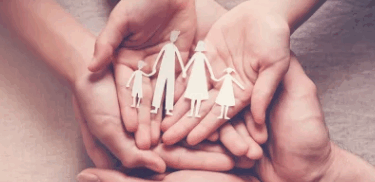In the past five years, I’ve given birth to three beautiful boys and each labor was unique and memorable. From back labor with an epidural to induction with a birth ball and no meds, I am proud of each experience, as they resulted in amazing new life being brought into this world. Also within the past five years, there have been medical advancements in the field of labor and delivery. Whether you’re hoping for a natural delivery or a planned Cesarean section (or anything in between), there are many emerging options available!
FAMILY CENTERED/GENTLE CESAREAN SECTION
Cesarean sections are the most common surgery in the U.S. In fact, the CDC estimates one in three babies are born this way. The goal of a gentle C-section is to make the mother’s delivery feel less like a surgical procedure, and more like a birth. Doing so simply takes forethought. First, you can request a clear drape, so you can see baby come into this world. Second, your labor and delivery team can place medical equipment beside you, instead of on your chest, which will allow Baby to be placed on your chest as soon as possible to promote bonding and breastfeeding, if desired. Other modifications include minimizing medical chatter and having soft music playing to create a calm environment.
Laura Lewis, a local mother of two, was a high risk patient during her second pregnancy and a C-section was recommended. Lewis and her husband discussed a gentle C-section with their obstetrician and he agreed to it. “It was an amazing and healing experience,” says Lewis. “I didn’t feel like I missed out on anything.” Music played in the operating room and Lewis saw her baby immediately after delivery. Lewis held her baby in the operating room and nursed her baby in the recovery room. “It was all around a happy, beautiful, and stress-free experience.”
HYDROTHERAPY & WATER BIRTHS
At least one local hospital now offers moms experiencing low-risk pregnancies the option to deliver in water. Atrium Medical Center in Middletown currently offers two portable Jacuzzi tubs for moms to labor and deliver in as well. This year, Atrium will open the Natural
Beginnings Birth Center. Their programs support women wanting to experience natural childbirth, and will include the addition of two new birthing tubs.
LABORING TOOLS
With my most recent labor two months ago, I was focused on experiencing a labor without the administration of an epidural. Thankfully, I was prepared to ask for laboring tools once I arrived to my LDR room. Remember, if you do not see them in your room, that does not mean they are not available for use — simply ask!
- Birthing Ball. Sitting and swaying on a birthing ball helps open up the pelvis. For me, the birthing ball was a big help!
- Peanut Ball. Ideal for moms in bed due to exhaustion, choice, or epidural. This tool may help shorten labor duration and help rotate babies who are in unfavorable positions. Women can use the ball in a reclining position or on their side; there are a variety of ways to place the ball under and between the legs to help baby move along.
- Birthing Bar. This tool helps Mom get in an ideal position during the pushing phase of labor. It may shorten the duration of pushing, as it helps baby descend into the birth canal.
- Nitrous Oxide. Laughing gas is used in many countries as a pain reliever during labor. Mom breathes in a mix of 50 percent nitrous oxide and 50 percent oxygen through a mask 30 seconds before contractions, to help ease the pain. This option is on the rise in the U.S.
SEEDING
When babies are born vaginally, they are exposed to beneficial bacteria as they descend through the birth canal. Good bacteria gives baby immunities to the outside world to help keep them healthy. Seeding is the process of exposing babies born via Cesarean section to their mother’s vaginal cultures in the hopes that they too benefit from their mother’s good bacteria. Absorbent gauze is placed inside Mom as she’s being prepped for surgery. Once the baby is delivered, the gauze is removed and swiped over the newborn baby’s face. Gillian Foreman, MA, IBCLC, offers courses through her business, Modern Breastfeeding + Education. In one such class, “Happy, Healthy Cesarean,” Gillian explores many topics concerning Cesarean sections including family centered/ gentle Cesareans and also seeding. “Seeding can help women have control over their birth to benefit their baby,” Foreman says. If you have a desire to have seeding be a part of your C-section, talk to your medical provider to make it a part of your birth plan.
DELAYED CORD CLAMPING & CUTTING
Most umbilical cords are clamped and cut anywhere from 10 – 15 seconds after birth, however, even waiting twice that long could potentially have a lasting impact in your child’s life. Experts from The American Congress of Obstetricians and Gynecologists and the American Academy of Pediatrics advise waiting 30 – 60 seconds (others suggest waiting one to three minutes) to clamp and cut the cord, to allow blood to flow from the placenta back into the newborn. The suggested benefits of delayed cord clamping and cutting include reduced risk of anemia, higher deposits of iron (which is important in brain development), and higher blood volume level for the infant.
VERNIX
Vernix is a protective coating on the newborn baby’s skin. Some babies are covered in it, others have very little at all. Henry T. Akinbi, M.D., and the late Steve Hoath, M.D., from Cincinnati Children’s Hospital suggest leaving the vernix on the baby, or even massaging it into the baby’s skin. Akinbi has found the substance has antimicrobial characteristics, and that it is an ideal first moisturizer for babies skin.
PLACENTA ENCAPSULATION
The placenta provides the baby with absolutely everything it may need during its in-utero stay: oxygen, nourishment, waste removal, and protection from the outside world. After delivery, some women choose to have their placenta encapsulated so they may benefit from the nutrient dense organ. Molly Murray is a mother of three, childbirth educator, doula, placenta encapsulation specialist, and owner of Cincinnati Birth and Parenting, LLC. Murray has encapsulated 45 placentas. “Anecdotal evidence suggests that women who consume placenta capsules experience improved postpartum healing, fewer mood issues, and an increased milk supply. I’m happy to provide this service to families in the Cincinnati and Northern Kentucky area,’’ she says.
There are lots of options available in today’s delivery rooms — now you know about them and can get what you want!





